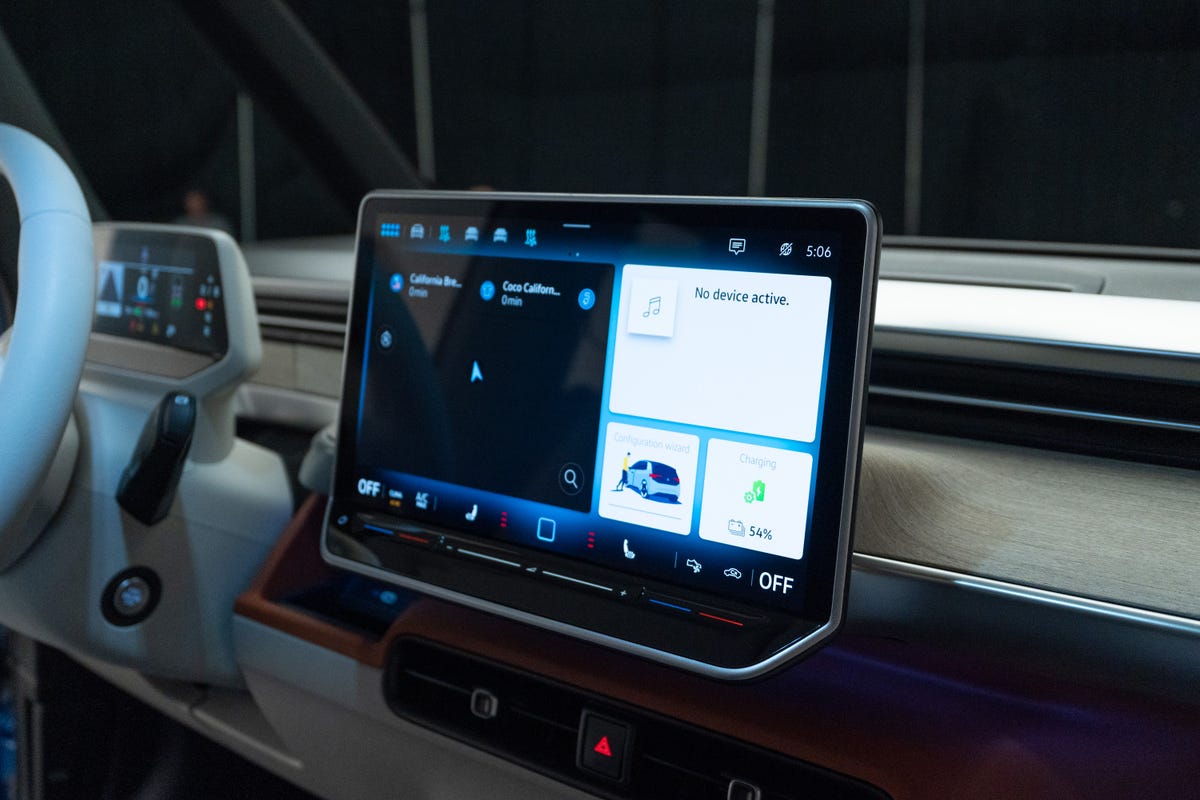Volkswagen’s latest new vehicle debut is an electric revival of the classic VW Microbus… again. Yes, the ID Buzz is back after a European debut in 2022, however, this new three-row Buzz is bigger, more powerful and bound for US roads for the first time in over 20 years.
The broad strokes of the three-row ID Buzz are essentially unchanged from its European counterpart. The electric van still features a design inspired by Volkswagen’s iconic Type 2 Microbus, from the stubby nose and fascia to the long flat roof and boxy silhouette. The three-row Buzz’s massive front VW logo is now illuminated, a new bit of flash for the US debut.
3-Row VW ID Buzz Electric Microbus Is Headed to the States in 2024
See all photos
Nearly 10 inches longer
However, the Buzz that will arrive in the States will be 9.9-inches longer than the two-row model, with all that additional length going into the now 127.5-inch wheelbase. This means that while the Buzz’s footprint has grown significantly, it still retains its short overhangs, which helps it look smaller than it is.
To give you a sense of scale, the three-row ID Buzz is about the same width (77.9 inches) as Volkswagen’s three-row Atlas but, at 192.4 inches from bumper to bumper, is about 8.3 inches shorter than the SUV. The Buzz bus is also 74.6 inches tall, or around 5 inches taller than the Atlas. (And, for fans of the old Microbus, the big Buzz is nearly 2 feet longer than the Type 2.)

The longer, more powerful ID Buzz arrives in the US in 2024.
Unfortunately, VW was tight-lipped regarding range estimates, so some guesswork is required. The two-row with the smaller battery is currently estimated at 258 miles per charge, but that’s on the more generous WLTP cycle. The three-row boasts a bigger battery but will also be a touch heavier and subject to our more stringent EPA testing cycle. I expect the official estimate will remain in the same 260 to 270-mile ballpark.
We’re still not getting the two-row ID Buzz here in the US, so the three-row will be the only option for nostalgic fans of EV vans when it arrives on North American roads in 2024. More details — range, capacity, price, etc. — and announcements are expected over the coming months.
!function(f,b,e,v,n,t,s)
{if(f.fbq)return;n=f.fbq=function(){n.callMethod?
n.callMethod.apply(n,arguments):n.queue.push(arguments)};
if(!f._fbq)f._fbq=n;n.push=n;n.loaded=!0;n.version=’2.0′;
n.queue=[];t=b.createElement(e);t.async=!0;
t.src=v;s=b.getElementsByTagName(e)[0];
s.parentNode.insertBefore(t,s)}(window, document,’script’,
‘https://connect.facebook.net/en_US/fbevents.js’);
fbq(‘set’, ‘autoConfig’, false, ‘789754228632403’);
fbq(‘init’, ‘789754228632403’);

